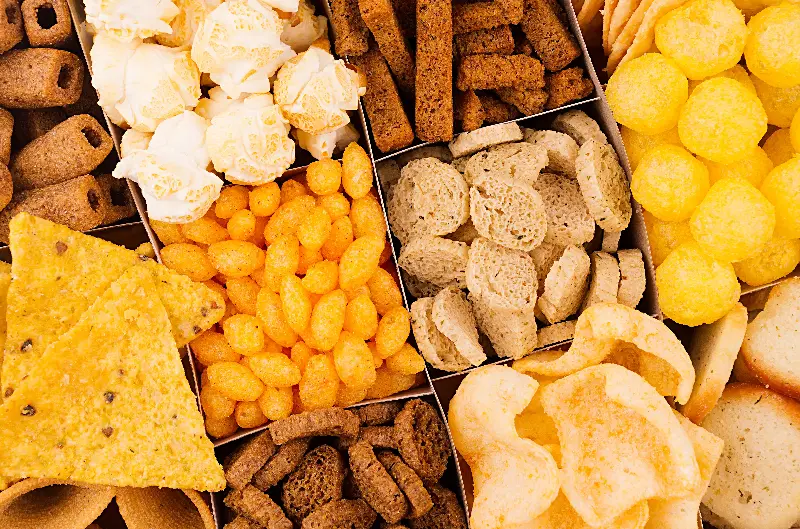From potato chips that beckon from crinkly bags to the perfectly burnt edge of a wood-fired pizza, crispy and crunchy foods hold an almost magical sway over our senses. Whether it’s the snap of a freshly baked baguette or the lively shatter of tempura batter, the world’s most beloved treats aren’t just tasty—they’re irresistibly crunchy. But what is it about that unmistakable texture that keeps us coming back for more? Food science and psychology offer some surprising answers to why our brains are so smitten with the sublime sensation of crunch.

The Sensory Symphony Of Crunch
Crunch is more than just a mouthfeel—it’s a full sensory experience that starts before the food even touches your lips. Researchers have discovered that the sound of food crunching, traveling through both air and the bones of your jaw, signals freshness and quality to your brain. In a fascinating experiment, British scientist Charles Spence found that people perceived potato chips to be fresher and tastier when the crunching sounds were artificially amplified.
But the sound of crunch doesn’t act alone. The sensation also delivers an explosion of tactile feedback. When you bite into a crisp apple or a cracker, your teeth meet resistance, which is swiftly broken by the food’s structure. This interplay of force and fracture fascinates the brain, giving us a sense of satisfaction that softer foods seldom provide.
Why We Crave The Crunch
Crispy foods spark a cascade of delight in our brains—not just through their taste, but through their texture and sound. Food psychologists believe our love for crunch may have deep evolutionary roots. In the wild, loud, crunchy sounds often indicated that fruits or vegetables were fresh, seeds were ready to eat, and meat was roasted to perfection. Quiet or mushy foods, on the other hand, risked being spoiled or rotten.
Today, manufacturers engineer snacks to max out those satisfying noises and mouthfeels. You might notice that the most addictive snacks—from corn chips to pretzels—crumble and crunch in a particular way. That’s no accident: food scientists spend years studying the architecture of snack foods, measuring the force needed to create the perfect crisp and even analyzing “crunch signatures” with sensitive microphones.
Crunchy foods also introduce a playful, interactive element to eating. Each bite’s audible response creates a mini-feedback loop, rewarding us with a multisensory burst that can make eating more fun and even help us feel full sooner by making us more aware of what we’re consuming.

The Science Behind The Texture
The hallmark of crunchy foods is their structure—think air pockets in a chip, starch granules in a carrot, or the bubble-filled crumb of a fresh loaf of bread. At the microscopic level, these structures are cleverly engineered or naturally formed to be brittle and fracturable, making them break with a satisfying snap when force is applied.
Water content is a key factor. Foods with low moisture are more likely to shatter and crack, creating that prized crunchiness. High-temperature cooking methods—frying, roasting, baking—are famous for driving off moisture and leaving behind a delicate, crisp shell.
There’s even a term for our attraction to this texture: “orosensory enjoyment.” Our mouths are packed with nerve endings that respond excitedly to the miniature crunching events, sending happy signals to the reward centers of the brain. This helps explain why we reach for crunchy toppings on salads or choose fried chicken over poached, even when the flavors are similar.
Cultural And Emotional Connections
Crunchiness transcends cultures, but the types of food that deliver it vary widely. In Japan, the crisp snap of pickled vegetables (tsukemono) is prized for its palate-cleansing powers. In France, the crackle of a perfect baguette crust is non-negotiable. In the Middle East, the crunch of falafel contrasts beautifully with creamy dips.
Emotionally, crunchiness can play with nostalgia as well. The sound and texture of certain foods can bring back memories of childhood lunches, picnics, or family gatherings. For some, the act of biting down on something crunchy helps relieve stress and can be comfortingly rhythmic—a subtle, edible form of fidgeting that soothes the mind as well as the palate.
The Modern Crunch Craze
With more people seeking sensory pleasure in every bite, the food industry is undergoing a crunch revolution. Trendy foodies are obsessed with “ASMR mukbangs,” where online personalities eat super-crispy foods to trigger pleasurable tingles in viewers’ brains. Health food brands are amplifying crunchiness in their products to lure snackers away from traditional junk food, using ingredients like chickpeas, lentils, and dehydrated vegetables.
Interestingly, food scientists warn that too much crunch can be overwhelming, dulling our other senses or even tiring out the jaw. The best textures, they say, offer a balance—crispy exteriors giving way to softness or creaminess underneath. Think about your favorite fried dumpling or chocolate bar with a crisp shell and smooth filling: it’s the contrast, not just the crunch, that makes the experience irresistible.
Our preoccupation with crunchy foods is far more than a passing fad. It’s a dance of biology, psychology, and culture—an edible symphony that teases, delights, and rewards all at once. Next time you reach for a crunchy snack, remember: you’re not just craving a flavor, but a primal sensory thrill that starts in your mouth and echoes in your mind.
